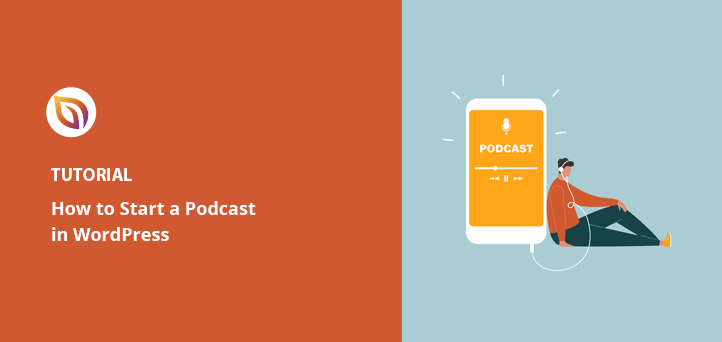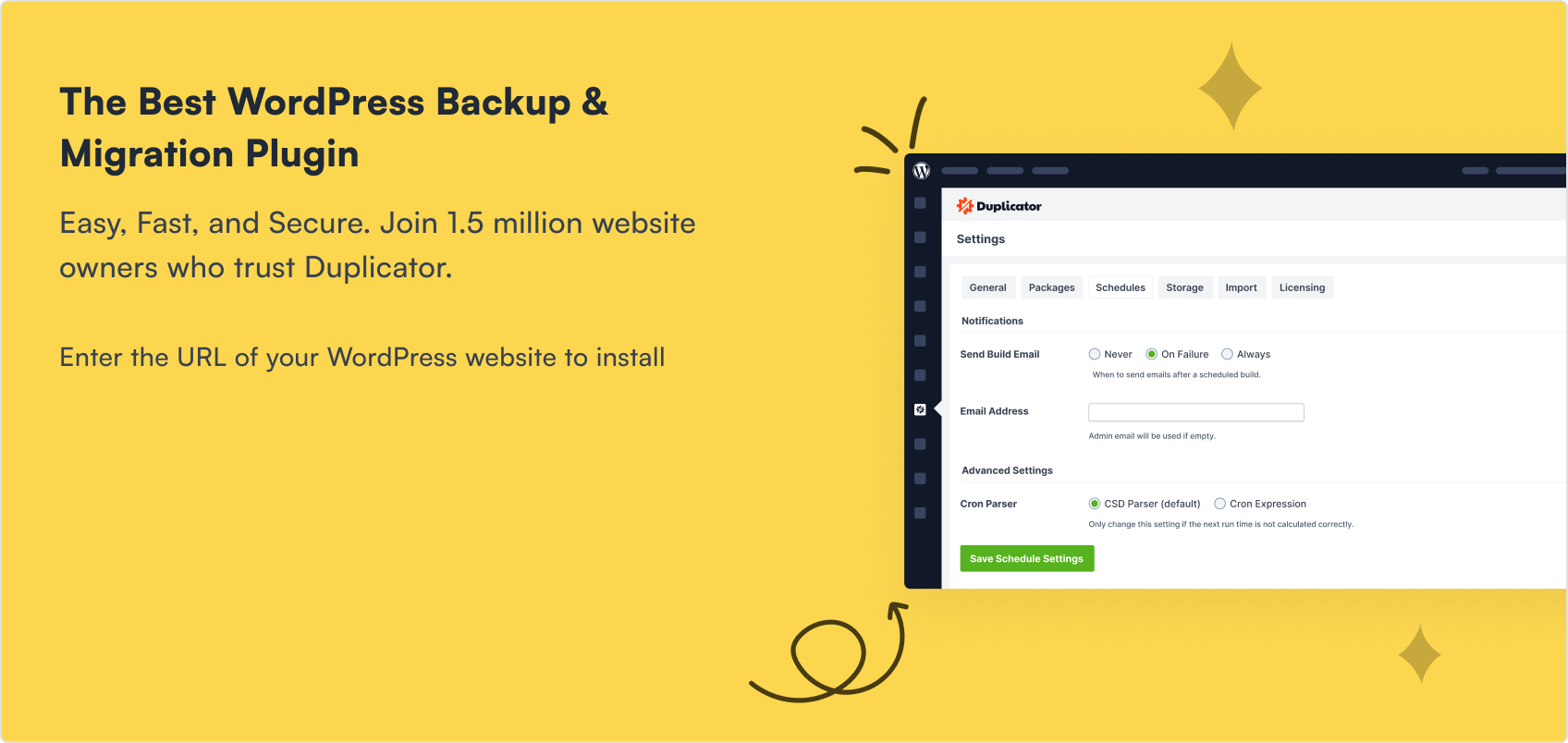Want to start a podcast with WordPress? All you need is a website, podcast hosting, and some simple recording tools. With the right setup, you can publish episodes on your own site and share them on platforms like Apple Podcasts and Spotify.
In this guide, I’ll walk you through step by step how to launch your podcast, from choosing your niche and equipment to publishing episodes in WordPress and growing your audience.
Steps to start a podcast on WordPress:
- Step 1: Define Your Podcast Niche and Format
- Step 2: Set Up Your Podcast Website with WordPress
- Step 3: Choose a Podcast Hosting Service
- Step 4: Pick Your Podcasting Equipment
- Step 5: Plan and Script Your Episodes
- Step 6: Record and Edit Your Podcast
- Step 7: Upload Your Files to Your Hosting Service
- Step 8: Publish Your Podcast in WordPress
- Step 9: Distribute Your Podcast on Listening Apps
- Step 10: Promote and Grow Your Podcast Audience
Why Small Businesses Should Consider Podcasting
Podcasting is a low-cost way for small businesses to build authority, connect with customers, and reach people where they spend time, on the go.
- There are over 460 million podcast listeners worldwide in 2024, up from 274 million in 2019.
- In the U.S., 64% of people (age 12+) have listened to a podcast, and 38% did so in the last month.
- Podcast listeners spend about 7 hours per week tuned in, and 79% say they listen to learn something new.
- Small business audiences are highly engaged—60% more likely to consume podcasts than the average adult, especially on business or advice topics.
- 63% of podcast listeners have bought something promoted in a show, and 71% visit the sponsor’s site after hearing an ad.
These numbers show why podcasting is such a smart marketing tool. You’re reaching an audience that’s growing, engaged, and ready to act.
With this in mind, let’s look at the steps to start a podcast in WordPress.
Step 1: Define Your Podcast Niche and Format
Before you set up your podcast website, you need a clear niche and format. With thousands of shows available, this helps you stand out and attract the right listeners.
Start by asking yourself these questions:
- What will your podcast be called?
- Who is your target audience?
- What topics will you cover?
- How is your show different from others?
- Will it be solo, co-hosted, or interview-based?
- What style will you use—conversational, storytelling, or educational?
For example, instead of a broad “personal development” podcast, you might focus on productivity for remote workers or leadership tips for small teams. Narrowing down helps you create focused episodes that keep listeners coming back.
Remember: your unique voice is your biggest asset. Even if others cover a similar topic, your perspective and authenticity will make your show stand out.
Step 2: Set Up Your Podcast Website with WordPress
To publish your podcast and grow an audience, you’ll need a website. A site gives you a home base for episodes, show notes, and promotion.
WordPress.org is the best platform for podcasters because it comes with built-in RSS feeds, works with powerful plugins, and lets you fully monetize your content. Unlike WordPress.com, you’re free to run ads, add sponsors, and use affiliate links.
Here’s what you’ll need to get started:
- Domain name – Your website’s address (example: mypodcast.com).
- Web hosting – Where your site files are stored online.
Most hosts cost around $7–10 per month, with domains starting at about $15 per year. You can get both in one place through providers like Bluehost, which is officially recommended by WordPress.
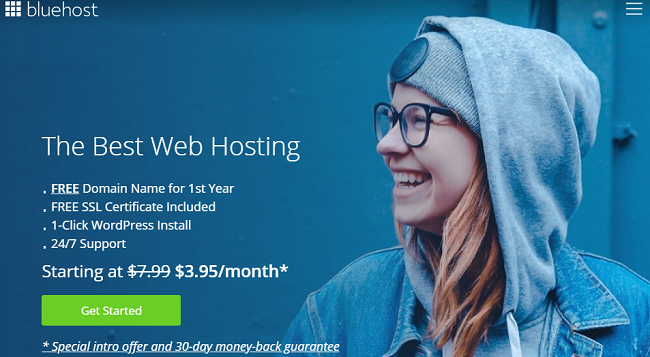
Once WordPress is installed, you can customize your site with WordPress plugins and WordPress themes.
If you want a quick, professional look for your podcast website, SeedProd makes it easy to design a custom WordPress theme without coding.
Step 3: Choose a Podcast Hosting Service
Your regular web host isn’t built to handle large audio files. That’s why podcasters use a dedicated podcast hosting service. These platforms store your episodes, generate a podcast feed, and make it easy to distribute to apps like Apple Podcasts and Spotify.
Here are some popular podcast hosting services for WordPress users:
| Blubrry | Best for WordPress integration (PowerPress plugin, detailed analytics) |
| Buzzsprout | Beginner-friendly with automatic episode optimization |
| Castos | Advanced features plus a dedicated WordPress plugin (Seriously Simple Podcasting) |
| Spotify for Podcasters | Free option with direct distribution to Spotify and other platforms |
If you want deep WordPress integration, Blubrry is a solid choice. If you’re just starting out, Buzzsprout is simple to set up and includes a free plan. For scaling, Castos offers growth features like private subscribers and video podcast hosting.
Once you sign up, your host will give you a podcast RSS feed link. This feed is what you’ll submit to directories later and connect to WordPress to display your episodes.
Step 4: Pick Your Podcasting Equipment
You don’t need a full studio to start a podcast. A good USB microphone and headphones are often enough to get going. Clear audio is critical—if your podcast sounds poor, listeners may not come back.
Here are some beginner-friendly microphones podcasters love:
| Microphone | Best For | Pros | Cons | Price |
| Samson Go | Budget setup | Portable Easy to use | Switching modes can be tricky | $39 |
| Blue Yeti | Most versatile | 4 pickup patterns Solid build XLR + USB | Bulky on desks | $118 |
| HyperX QuadCast | USB convenience | Plug-and-play Mute button Great design | Can boost “s” sounds | $134 |
| Blue Ember | Studio setups | Professional sound Good off-axis rejection | Needs phantom power Pop filter recommended | $99 |
Alongside a mic, you may also want:
- Pop filter – reduces “p” and “s” sounds
- Shock mount – prevents desk vibrations
- Mic arm – saves desk space
- Closed-back headphones – for clear monitoring
Start simple and upgrade later as your podcast grows. Many successful shows began with just one reliable USB mic and free editing software.
Step 5: Plan and Script Your Episodes

Before you hit record, take time to plan your episodes. A little preparation makes your show flow better and keeps listeners engaged.
Here are the key things to decide for your first episodes:
- Content: Outline the main talking points for each episode so you don’t drift off track.
- Length: Most podcasts run 20–40 minutes, but it depends on your audience. Aim for quality over time limits.
- Extra media: Add intro/outro music or sound effects to make your show feel polished. Free sources include Free Music Archive, YouTube Audio Library, and SoundBible.
- Script/Storyboard: Write a simple script or bullet points. This keeps the flow natural but professional.
Don’t worry about being perfect. Authentic touches—like going off-script briefly—help you connect with listeners. But having an outline ensures your episodes stay clear and consistent.
Step 6: Record and Edit Your Podcast
Once you’ve planned your episodes, it’s time to record. You’ll need recording software to capture your voice and editing tools to polish the audio.
Here are some popular choices:
- Audacity (free, Windows/Mac/Linux) – Open-source and beginner-friendly
- GarageBand (free on Mac) – Simple for Apple users
- Adobe Audition (paid) – Professional features for advanced editing
- Hindenburg (paid) – Popular among journalists and podcasters
For beginners, Audacity is a solid choice. Install it, create a new project, and hit the red button to start recording. When you’re done, export the file as MP3 for the best balance of quality and small file size.
Here’s a quick video walkthough if you need help:
Pro tip: name your files consistently, such as episode-01.mp3, episode-02.mp3, and so on. This keeps your podcast library organized.
Once you’ve edited and saved your first episodes, you’re ready to upload them to your podcast hosting platform.
Step 7: Upload Your Files to Your Hosting Service
After recording, you’ll need to upload your podcast episodes to your podcast hosting platform. This is what creates the feed that podcast apps use to deliver your show.
The process is similar across most hosts. For example, in Blubrry you would:
- Log in to your hosting dashboard
- Select Upload New Episode or Upload Media
- Choose your MP3 file and add details like title, description, and episode number
- Save or publish to generate the episode link
Other hosts like Buzzsprout and Castos follow almost the same steps, with options to schedule episodes for later release.
Once uploaded, your hosting service will generate a podcast RSS feed. This feed is what you’ll connect to WordPress and later submit to directories like Apple Podcasts and Spotify.
Step 8: Publish Your Podcast in WordPress
With your episodes uploaded to a podcast host, it’s time to publish them on your WordPress site. This is where plugins come in—they connect your feed and display a podcast player for visitors.
Two of the most popular podcast plugins for WordPress are:
- PowerPress by Blubrry – Free, robust features, integrates directly with Blubrry hosting
- Fusebox Player – Stylish, mobile-friendly player with both free and pro options
If you’re hosting with Blubrry, install PowerPress to link your account. Go to PowerPress » Settings and enter your Blubrry details to sync your feed. Once connected, you can add episodes directly to posts or pages.
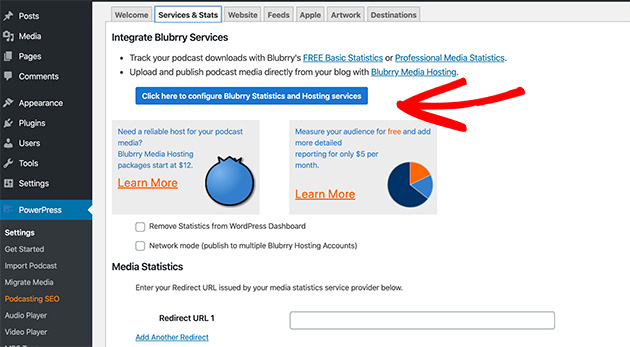
If you prefer a customizable player, install the Fusebox Player.
After activation, go to Settings » Fusebox Player, paste your feed URL, and adjust the design (light/dark mode, colors, and button styles).
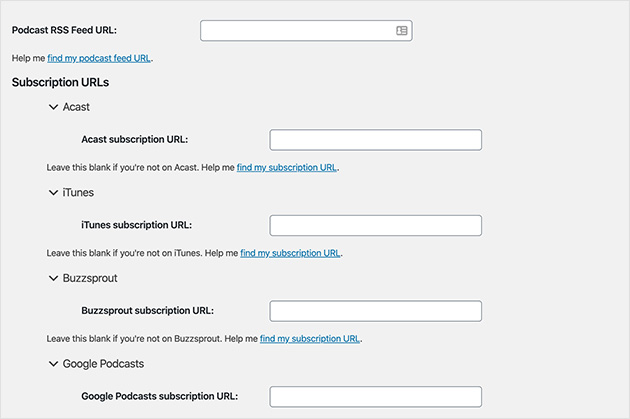
Fusebox lets you embed full podcast feeds or single episodes with a shortcode.

Pro tip: Create a dedicated Podcast category in WordPress so your episodes stay separate from blog content. This also gives you a clean archive page for all episodes.
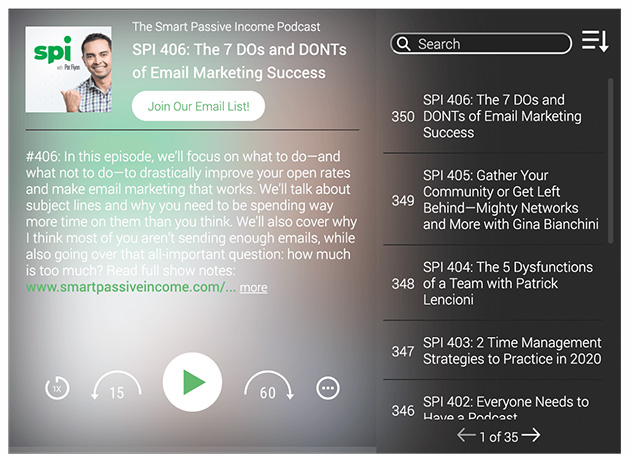
Step 9: Distribute Your Podcast on Listening Apps
Publishing your podcast on WordPress is just the start. To reach a wider audience, you’ll need to submit your show to major podcast directories and apps.
Here are the most popular platforms to submit your podcast:
- Apple Podcasts – The largest directory, essential for reaching iPhone users
- Spotify for Podcasters – Free hosting option with direct access to Spotify listeners
- Google Podcasts Manager – Adds your show to Google Search and the Google Podcasts app
- Amazon Music & Audible – Growing directory for voice-activated listening
- iHeartRadio – Popular U.S. radio network and podcast hub
- Pandora – Expands reach to music-first audiences
Each platform will ask for your podcast’s RSS feed (provided by your hosting service). Once approved, new episodes you publish in WordPress will automatically appear in these apps.
Tip: Approval can take a few days. Submit to multiple directories early so your podcast is available everywhere by the time you promote your first episodes.
Step 10: Promote and Grow Your Podcast Audience
Launching your podcast is only the first step. To build a loyal audience, you’ll need to promote your episodes consistently.
Here are some proven ways to grow your podcast:
- Create a podcast landing page: A single page with your show description, subscribe buttons, and latest episodes. Lean how to build a podcast landing page here.
- Build an email list: Add signup forms to your site so listeners never miss an episode.
- Share on social media: Turn highlights into short clips, audiograms, or reels to boost reach.
- Cross-promote: Appear on other podcasts or invite guests with their own audiences.
- Encourage reviews: Ask listeners to leave ratings on Apple Podcasts and Spotify to improve visibility.
With consistent promotion, your podcast can become a powerful channel to attract new customers, build authority, and grow your brand.
FAQs on Starting a Podcast in WordPress
You’ve now seen how to start a podcast with WordPress—from choosing your niche and equipment to publishing episodes and sharing them on platforms like Apple Podcasts and Spotify. With these steps, you can launch your show confidently and start building a loyal audience.
Remember, the key is consistency. Keep publishing episodes, stay authentic, and promote your podcast so more people discover it.
If you’re ready to grow faster, create a podcast landing page with SeedProd. In just a few clicks, you can showcase your episodes, add subscribe buttons, and capture emails to turn listeners into fans.
You may also find the following guides helpful:
- How to Write a Welcome Page for Your Website
- How to Create a New Website Launch Marketing Plan
- How to Create an Affiliate Program in WordPress
- Social Media Lead Generation Strategies You Need to Try
Thanks for reading! We’d love to hear your thoughts, so please feel free to join the conversation on YouTube, X and Facebook for more helpful advice and content to grow your business.

